Solarmodule in Parallel- und Reihenschaltung verstehen
In der heutigen Welt der sauberen Energie ist es für jeden, der eine Solarstromanlage bauen oder optimieren möchte, entscheidend, wie Solarmodule verdrahtet werden – parallel oder in Reihe. Egal, ob Sie ein Heimwerker sind, der eine Solaranlage zu Hause installiert, oder ein professioneller Installateur: Die Art und Weise, wie Solarmodule angeschlossen werden, wirkt sich direkt auf Systemspannung, Stromstärke, Effizienz und Gesamtzuverlässigkeit aus.
Dieser Leitfaden erläutert alles, was Sie über Solarmodule in Parallel- und Reihenschaltung wissen müssen – von den Grundlagen bis hin zu praktischen Anwendungen. Am Ende erfahren Sie, wie Sie die optimale Konfiguration für Ihren Energiebedarf wählen.
- Grundlagen von Solarmodulen und ihrem elektrischen Verhalten
- Funktionsweise von Solarmodulen in Reihenschaltung
- Funktionsweise von Solarmodulen in Parallelschaltung
- Vergleich von Reihen- und Parallelschaltungen von Solarmodulen
- Kombination von Solarmodulen in seriell-parallelen Hybridsystemen
- Sicherheitsaspekte bei der Verkabelung von Solarmodulen
- MPPT- und PWM-Controller und ihre Kompatibilität mit Solarmodulen
- Auswahl der besten Verkabelungskonfiguration für Ihre Solarpanel-Einrichtung
- Fehlerbehebung bei häufigen Verkabelungsproblemen bei Solarmodulen
- Zukünftige Trends bei Solarmodulen und Verkabelungstechnologien
- Abschließende Gedanken zu parallel und in Reihe geschalteten Solarmodulen
Grundlagen von Solarmodulen und ihrem elektrischen Verhalten
Was ist ein Solarpanel?
Ein Solarmodul (auch Photovoltaikmodul genannt) ist ein Gerät, das Sonnenlicht in Gleichstrom umwandelt. Jedes Modul besteht aus mehreren Solarzellen, die intern in Reihe geschaltet sind, um eine bestimmte Ausgangsspannung zu erzeugen. Typischerweise erzeugen Solarmodule für Privathaushalte je nach Bauart zwischen 18 und 48 V.
Spannung, Strom und Leistung in Solarmodulen
Um die Reihen- und Parallelschaltung vollständig zu verstehen, müssen Sie die Beziehung zwischen Spannung (V), Strom (A) und Leistung (W) verstehen:
Leistung (W) = Spannung (V) × Stromstärke (A)
Bei der Kombination von Solarmodulen bestimmt die Art ihrer Verkabelung, wie sich Spannung und Stromstärke im System ändern, was sich letztendlich auf die für Ihre Geräte oder Ihren Batteriespeicher verfügbare Leistung auswirkt.
Funktionsweise von Solarmodulen in Reihenschaltung
Definition der Reihenschaltung
Bei einer Reihenschaltung werden Solarmodule Ende an Ende verdrahtet: Der Pluspol eines Moduls wird mit dem Minuspol des nächsten Moduls verbunden. Diese Konfiguration erhöht die Systemspannung, während der Strom derselbe bleibt wie bei einem einzelnen Modul.
Zum Beispiel:
3 × 12 V, 5 A-Panels in Reihe = 36 V, 5 A Gesamtleistung
Vorteile von Reihenschaltungen
Höhere Spannung: Geeignet für Wechselrichter mit Hochspannungseingang oder MPPT-Laderegler.
Reduzierte Verdrahtungsverluste: Höhere Spannung bedeutet weniger Strom, was die Widerstandsverluste über lange Kabel reduziert.
Bessere Effizienz in kühleren Klimazonen: Hochspannungssysteme arbeiten unter bestimmten Umgebungsbedingungen effizienter.
Nachteile von Reihenschaltungen
Schattenempfindlichkeit: Wenn ein Panel beschattet ist, reduziert dies den Strom der gesamten Kette.
Risiko einer Fehlanpassung: Um Ineffizienzen oder Schäden zu vermeiden, müssen die Module hinsichtlich Spannung und Stromstärke genau aufeinander abgestimmt sein.
>>Siehe auch: Sollten Batteriezellen dicht gepackt oder mit Platz versehen werden?
Funktionsweise von Solarmodulen in Parallelschaltung
Definition der Parallelschaltung
Bei einer Parallelschaltung werden die Pluspole aller Module und alle Minuspole aller Module miteinander verbunden. Bei dieser Anordnung bleibt die Systemspannung dieselbe wie bei einem einzelnen Modul, der Strom wird jedoch erhöht.
Zum Beispiel:
3 × 12 V, 5 A-Panels parallel = 12 V, 15 A Gesamtleistung
Vorteile von Parallelverbindungen
Schattentoleranz: Die Beschattung eines Panels hat keinen signifikanten Einfluss auf die Leistung der anderen.
Sicher für Niederspannungssysteme: Ideal für Systeme, die unter einer Spannungsschwelle bleiben müssen, wie 12-V- oder 24-V-Systeme.
Flexibilität bei der Erweiterung: Im Laufe der Zeit können einfacher weitere Panels hinzugefügt werden, ohne die Spannungskompatibilität zu ändern.
Nachteile paralleler Verbindungen
Erhöhte Verdrahtungskomplexität: Erfordert dickere Kabel, um höhere Stromstärken verarbeiten zu können.
Mögliche ungleichmäßige Belastung: Verschiedene Paneele können ungleichmäßige Strombelastungen tragen, wenn sie nicht richtig aufeinander abgestimmt sind.
Vergleich von Reihen- und Parallelschaltungen von Solarmodulen
Auswirkungen auf Spannung und Strom
Serie: Erhöht die Spannung, der Strom bleibt konstant.
Parallel: Erhöht den Strom, die Spannung bleibt konstant.
Auswirkungen auf das Laden der Batterie
Wenn Sie Solarmodule zum Laden von Batterien verwenden, müssen Sie die Ausgangsspannung des Moduls an die des Batteriespeichers anpassen. Reihenschaltungen eignen sich oft besser zum Laden von Akkumulatoren mit höherer Spannung, während Parallelschaltungen für 12-V- oder 24-V-Konfigurationen gut geeignet sind.
Anwendungsbeispiele aus der Praxis
Netzunabhängige Kabine mit 48-V-Batteriebank: Bevorzugen Sie eine Reihenschaltung, um problemlos 48 V zu erreichen.
Wohnmobil mit 12-V-System: Bevorzugen Sie eine Parallelverdrahtung, um die Spannung auf einem sicheren Ladeniveau zu halten.
Kombination von Solarmodulen in seriell-parallelen Hybridsystemen
Was ist eine Reihen-Parallel-Konfiguration?
Bei dieser Methode werden mehrere Solarmodule in Reihe geschaltet und anschließend parallel geschaltet. So können beispielsweise zwei Stränge mit jeweils drei 12-V-Modulen (in Reihe geschaltet) parallel geschaltet werden, um eine höhere Spannung und einen höheren Strom zu gewährleisten.
Vorteile der Hybridkonfiguration
Symmetrischer Ausgang: Optimiert sowohl Spannung als auch Strom für Systeme der mittleren Preisklasse.
Redundanz: Der Ausfall einer Zeichenfolge führt nicht unbedingt zur Deaktivierung des gesamten Arrays.
Skalierbarkeit: Einfachere Erweiterung und Feinabstimmung der Leistung.
Ideale Anwendungsfälle
Wohnanlagen mit 24V- oder 48V-Wechselrichtern
Größere Inselnetzsysteme
Kommerzielle Solarparks
Sicherheitsaspekte bei der Verkabelung von Solarmodulen
Sicherungen und Leistungsschalter
Beim Verdrahten von Solarmodulen ist es wichtig, Sicherungen oder Leistungsschalter einzubauen, um vor Überstromsituationen zu schützen, insbesondere bei Parallelkonfigurationen, bei denen sich der Strom summiert.
Drahtdimensionierung und Wärme
Hohe Stromstärken erfordern dickere Kabel, um Spannungsabfall und Überhitzung zu vermeiden. Verwenden Sie einen geeigneten Kabelquerschnitt basierend auf der Gesamtstromstärke Ihres Systems.
Qualität des Anschlusses
Verwenden Sie hochwertige MC4-Stecker oder gleichwertige Stecker, um sichere, wetterfeste Verbindungen zwischen Solarmodulen zu gewährleisten.
MPPT- und PWM-Controller und ihre Kompatibilität mit Solarmodulen
Was sind MPPT und PWM?
MPPT (Maximum Power Point Tracking): Passt den Eingang an, um unabhängig von Beschattung oder Temperatur die größtmögliche Leistung aus den Solarmodulen zu gewinnen.
PWM (Pulsweitenmodulation): Ein einfacherer, günstigerer Controller, der am besten funktioniert, wenn die Panelspannung nahe an der Batteriespannung liegt.
Welche Verkabelung funktioniert am besten?
MPPT-Regler profitieren von Reihen- oder Hybridaufbauten mit höherer Spannung.
PWM-Controller eignen sich besser für die Parallelverdrahtung, bei der die Spannung der Batterie sehr nahe kommt.
Auswahl der besten Verkabelungskonfiguration für Ihre Solarpanel-Einrichtung
Zu berücksichtigende Faktoren
Ihre Batteriebankspannung
Schattenmenge
Controllertyp
Kabellängen
Systemgröße und Erweiterungspläne
DIY vs. professionelles Design
Während kleine netzunabhängige Solarpanelsysteme für Heimwerker erschwinglich sind, sollten größere oder netzgekoppelte Systeme immer von Fachleuten auf Sicherheit und Konformität geprüft werden.
>>Siehe auch Möglichkeiten zur sicheren Reaktivierung von NP45-Lithiumbatterien
Fehlerbehebung bei häufigen Verkabelungsproblemen bei Solarmodulen
Spannung entspricht nicht den Erwartungen
Dies kann an einer Nichtübereinstimmung der Panels, einer falschen Verkabelung oder fehlerhaften Komponenten in der Reihen- oder Parallelkonfiguration liegen.
Geringe Leistungsabgabe
Überprüfen Sie, ob es Verschattungen, beschädigte Anschlüsse oder Wechselrichter-/Controller-Einstellungen gibt, die nicht mit der Konfiguration Ihrer Solarmodule übereinstimmen.
Überhitzung oder ausgelöste Sicherungen
Wird häufig durch zu kleine Kabel oder zu hohen Strom in Parallelsystemen verursacht.
Zukünftige Trends bei Solarmodulen und Verkabelungstechnologien
Smart Panels und Mikrowechselrichter
Neue Technologien ermöglichen den unabhängigen Betrieb jedes Moduls mit optimaler Effizienz, wodurch die Nachteile sowohl der Reihen- als auch der Parallelschaltung reduziert werden.
Plug-and-Play-Systeme
Dank vorkonfigurierter Verkabelung und Sicherheitsmechanismen lassen sich Solarmodule für den Endverbraucher immer einfacher installieren.
Abschließende Gedanken zu parallel und in Reihe geschalteten Solarmodulen
Die Wahl zwischen Reihen-, Parallel- oder Hybridschaltung hängt von Ihren spezifischen Energiezielen, dem Systemdesign und den Umgebungsbedingungen ab. Wenn Sie verstehen, wie sich Solarmodule in den einzelnen Konfigurationen verhalten, können Sie sicherere und effizientere Systeme entwickeln.
Egal, ob Sie ein Wohnmobil aufrüsten, eine netzunabhängige Hütte bauen oder eine Dachanlage installieren, die richtige Verkabelung kann über die Leistung Ihres Systems entscheiden.
Zusammenfassend lässt sich sagen, dass eine gute Planung, die richtige Dimensionierung der Komponenten und ein Verständnis der Interaktion von Solarmodulen bei Parallel- oder Reihenschaltung Ihnen sowohl technisch als auch finanziell zum Erfolg mit Solarenergie verhelfen.

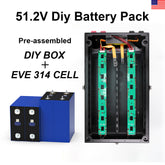

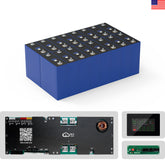

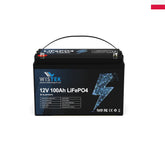
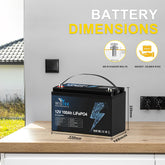

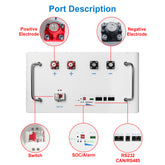
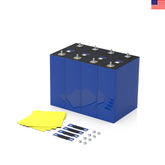
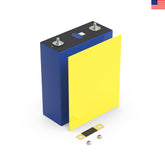
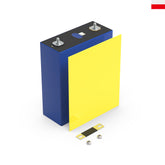

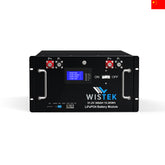
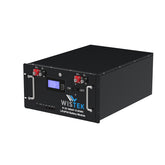
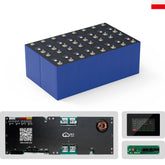








Leave a comment
All blog comments are checked prior to publishing